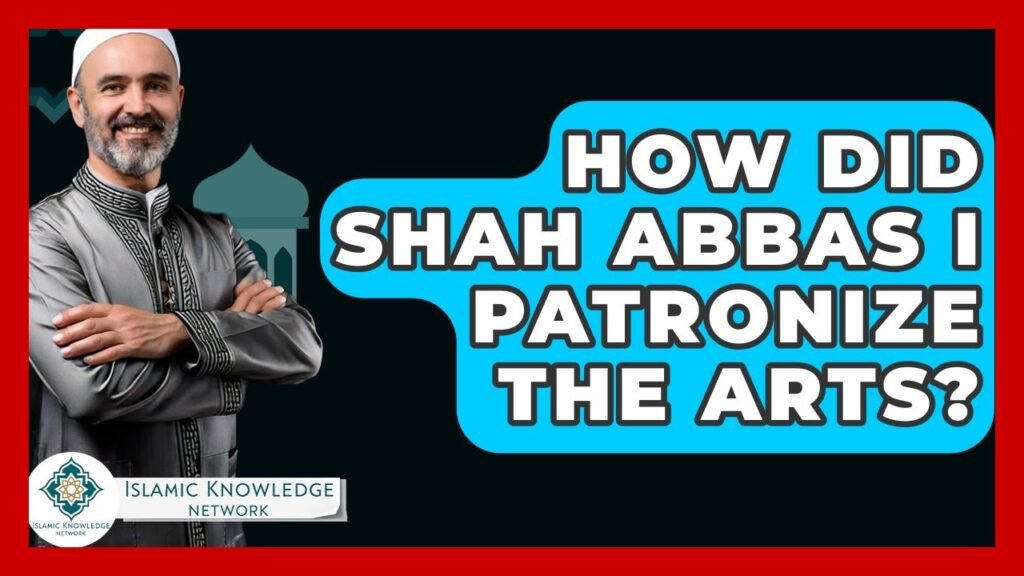You are here to read: How Did Shah Abbas I Support the Arts in His Era? – A Thoughtfully Written Guide Offering Spiritual Wisdom and Travel Advice for Every Pilgrim who is going on holy journey of Hajj or Umrah.
Shah Abbas I, revered as one of the most significant rulers of the Safavid dynasty in Persia, played a pivotal role in shaping the cultural landscape of the Islamic world during the late 16th and early 17th centuries. His reign marked a golden age for the arts, where architecture, painting, and calligraphy flourished under his patronage. Shah Abbas understood that fostering artistic expression was vital not only for cultural enhancement but also for consolidating his power and embellishing his empire’s reputation.
This article, “How Did Shah Abbas I Patronize The Arts?” delves into the various ways in which this illustrious emperor supported artists, craftsmen, and intellectuals, allowing Persia to emerge as a focal point of artistic innovation. From the construction of grand mosques to the commissioning of exquisite works of art, Abbas’s influence significantly transformed the visual and cultural identity of the region.
As we explore this fascinating intersection of politics and art, remember to visit airlinkhajjandumrah.com for the latest updates on Hajj and Umrah. Our blog provides comprehensive insights and guidance for pilgrims, ensuring that your spiritual journey is enriched with knowledge and connection to the broader Islamic heritage.
How Did Shah Abbas I Support the Arts in His Era?
Shah Abbas I, ruling from 1588 to 1629, is celebrated for his patronage of the arts during the Safavid era in Persia. His commitment to cultural development transformed Isfahan into a thriving center of art, architecture, and craftsmanship. Under his reign, the famous Isfahan mosques and palaces, like the Sheikh Lotfollah Mosque, were constructed, showcasing intricate tile work and calligraphy that still inspire artists today.
Moreover, Shah Abbas I attracted talented artists from various regions, fostering a unique blend of Persian and foreign styles. He established workshops where artisans could collaborate, leading to unprecedented advancements in miniature painting, carpet weaving, and metalwork. This cultural renaissance not only enriched Persian heritage but also promoted trade and diplomacy, as artworks commissioned during this era are now sought after worldwide.
As you explore our blog at Airlink Hajj and Umrah, you’ll find updated information on Hajj and Umrah, connecting the past with your spiritual journey. Just as Shah Abbas I supported artistic endeavors, we aim to provide travelers with the resources they need to enrich their experience on this sacred pilgrimage. Embrace your journey with the knowledge that history and art await you in every corner of the world.
You're at the middle of this awesome post at AirlinkHajjandUmrah.com through: How Did Shah Abbas I Support the Arts in His Era?. Keep reading, it gets better!
FAQ on How Did Shah Abbas I Support the Arts in His Era?
FAQs for "How Did Shah Abbas I Support the Arts in His Era?"
1. What specific art forms did Shah Abbas I promote during his reign?
Shah Abbas I supported various art forms, including painting, architecture, calligraphy, and carpet weaving, fostering a vibrant cultural environment.
2. How did the Safavid court influence artistic developments?
The Safavid court became a cultural hub, attracting skilled artisans and artists, which led to innovative techniques and a blending of styles that enriched Persian art.
3. What role did patronage play in the arts under Shah Abbas I?
Shah Abbas I acted as a major patron, commissioning numerous works, building grand architectural projects, and providing financial support that enabled artists to thrive.
4. How did Shah Abbas I’s policies impact the preservation of prior artistic traditions?
His policies encouraged the revival of traditional Persian art forms while simultaneously integrating influences from other cultures, ensuring the preservation and evolution of artistic traditions.
5. Can you provide examples of notable artworks or architectural projects from Shah Abbas I’s era?
Notable examples include the Sheikh Lutfullah Mosque, the Ali Qapu Palace, and exquisite miniature paintings found in manuscripts from that period, showcasing the artistic achievements of his reign.
That wraps up How Did Shah Abbas I Support the Arts in His Era?. Thanks for sticking with us till here! Share this: How Did Shah Abbas I Support the Arts in His Era? with your friends.
Check our homepage at Air Link Hajj & Umrah for more awesome updates.
Some interesting posts are: 1: Umrah Mubarak, 2: When is Umrah closed 2026?, 3: When does Umrah start after Hajj 2026?
Mushu, an experienced Saudi Arabia traveler and writer, shares insightful tips and spiritual reflections to enhance Hajj and Umrah journeys for fellow pilgrims. He has been to Makkah and Madina from 2016 to 2023 many times and his posts will reflect this.







